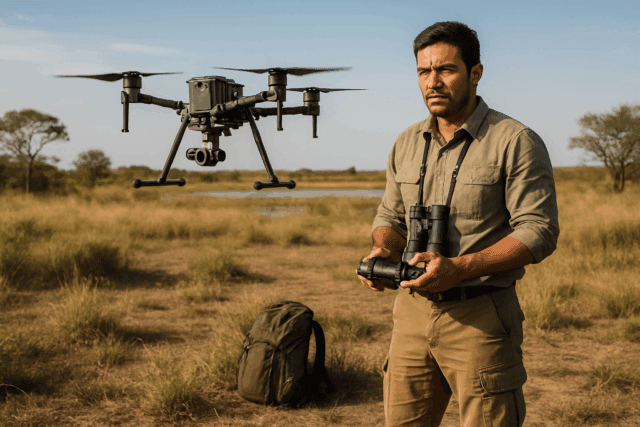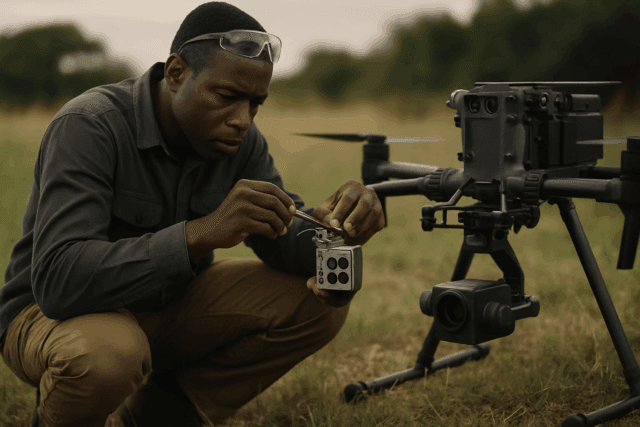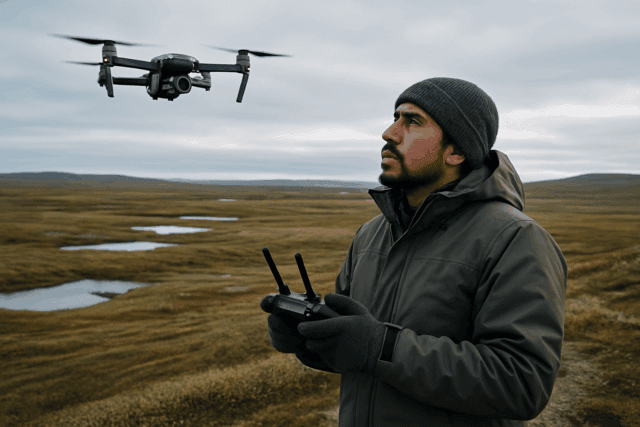Drones are revolutionizing infrastructure inspection, offering safer, more efficient, and cost-effective ways to monitor critical assets. From bridges and tunnels to power lines and wind turbines, drones equipped with high-resolution cameras, LiDAR sensors, and thermal imaging systems are providing detailed insights that traditional methods can’t match. This article explores the benefits, applications, regulations, and future trends of using drones for infrastructure inspection in the UK.
Why Drones are Taking Flight in Infrastructure Inspection
Traditional infrastructure inspection methods often involve manual labor, specialized equipment like scaffolding and cranes, and can be time-consuming and hazardous. Drone-based inspections offer several advantages:
- Enhanced Safety: Drones eliminate the need for personnel to access dangerous or hard-to-reach areas, reducing the risk of accidents and injuries.
- Improved Efficiency: Drones can quickly capture detailed images and videos of structures, allowing for thorough assessments in a fraction of the time compared to traditional methods.
- Cost Savings: By reducing the need for manual labor, specialized equipment, and downtime, drones can significantly lower inspection costs.
- High-Quality Data: Drones equipped with advanced sensors can collect high-resolution imagery, thermal data, and 3D models, providing comprehensive insights into the condition of infrastructure.
- Accessibility: Drones can access areas that are difficult or impossible for humans to reach, such as the internal components of bridges, tunnels, and wind turbines.
UK Regulations and Guidelines
Operating drones for infrastructure inspection in the UK requires adherence to local aviation laws and guidelines set out by the Civil Aviation Authority (CAA). Key regulations include:
- Flyer ID and Operator ID: Pilots need a flyer ID and an operator ID to fly drones in the UK.
- Theory Test: Obtaining a flyer ID requires passing a theory test to demonstrate knowledge of drone operation, aviation regulations, and safety procedures.
- Visual Line of Sight (VLOS): Generally, drones must be flown within the visual line of sight of the operator.
- Beyond Visual Line of Sight (BVLOS): New rules are being introduced to enable drones to fly beyond the visual line of sight in certain “atypical” operations, such as infrastructure inspection.
- Atypical Air Environments (AAE): The CAA defines an AAE as airspace where there is a reduced number of conventionally piloted aircraft due to the proximity of ground infrastructure.
- Air Navigation Order (ANO): Operators must adhere to regulations outlined in the Air Navigation Order (ANO), the Dronecode, and the Drone Regs.
- Drone and Model Aircraft Code: The Drone and Model Aircraft Code, published in 2019, provides legal frameworks and guidance for commercial drone operations.
Drone Tech in Action: Inspection Types
Drones are being used to inspect a wide range of infrastructure assets in the UK:
- Bridges: Drones can inspect the condition of metalwork, check for rust, and assess the integrity of concrete and overall structure. They can also be used for internal bridge inspections, accessing voids and confined spaces.
- Tunnels: Drones can inspect the integrity of tunnel structures, check for cracks and fractures, and identify anomalies in the ceiling or walls. This is especially useful for older tunnels that may be classified as confined spaces.
- Roads and Railways: Drones can be used for land surveys, topographic mapping, and inspecting the condition of roads and railway tracks.
- Power Lines: Drones equipped with high-resolution cameras and thermal imaging tools can monitor power lines for faults, damage, and wear.
- Wind Turbines: Drones can conduct maintenance checks of wind turbines, significantly reducing the resources needed to manage and repair green energy infrastructure.
- Solar Panels: Drones can assess solar panel performance and detect issues like dust, shading, or cracks.
- Culverts: Drones can conduct initial assessments of culvert conditions, identifying blockages, collapses, and potential hazards.
- Buildings: Drones can perform detailed surveys of building exteriors, capturing high-resolution images to identify cracks, water damage, and other defects.
- Communication Towers: Drones can perform inspections on communication towers to ensure structural integrity
The Best Drones for the Job
The best drone for infrastructure inspection depends on the specific application and requirements. Some popular models include:
- DJI Matrice 350 RTK: An industrial-grade drone with multi-payload support, RTK positioning, and IP55 weatherproofing. It can carry up to three sensors simultaneously.
- DJI Matrice 30 Series: A portable and weather-resistant drone with wide, zoom, and thermal camera options.
- DJI Mavic 3 Enterprise Series: A portable and foldable drone with wide and zoom cameras; the M3T model also features a thermal camera.
- DJI Mini 3 Pro/Mini 4 Pro: Small and lightweight drones with 4K video capabilities, suitable for inspections in built-up areas.
- Parrot ANAFI Ai: A drone with 4G connectivity, a 48MP camera, and advanced obstacle avoidance software.
- Flyability Elios 3: A specialized drone for indoor industrial inspections.
- Voliro T: A drone with a unique 6-degree-of-freedom navigation system, enabling it to approach structures from any angle.
Sensors and Payloads: Enhancing Inspection Capabilities
Drones can be equipped with a variety of sensors and payloads to enhance their inspection capabilities:
- High-Resolution Cameras: Capture detailed images and videos of structures, allowing inspectors to identify even the smallest signs of wear and tear.
- Thermal Cameras: Detect temperature variations, highlighting potential issues like insulation problems, electrical faults, or moisture intrusion.
- LiDAR Sensors: Enable 3D modeling of environments, providing a comprehensive view of the infrastructure.
- Multispectral Sensors: Capture data beyond the visible spectrum, which can be used to assess vegetation health, detect leaks, and identify other anomalies.
- Gas Detection Modules: Detect hazardous gases in confined spaces or near pipelines.
- Acoustic Sensors: Detects sound anomalies, such as leaks.
- Radiation Sensors: Detects radiation levels.
Training and Certification: Becoming a Drone Pilot
To operate drones for commercial purposes in the UK, pilots need to obtain proper training and certification:
- General Visual Line of Sight Certificate (GVC): A widely recognized certification for commercial drone operators in the UK.
- A2 Certificate of Competency (A2 CofC): A certification for operators of smaller drones (up to 4kg) in the Open Category.
- PfCO Conversion Course: For those who previously held a Permission for Commercial Operation (PfCO), conversion courses are available to update their qualifications to the GVC or A2 CofC.
Several training providers offer comprehensive drone training courses in the UK:
- Eagle Eye Innovations (EEI): Offers drone training courses for professionals in the utilities and transport industries.
- RUAS: An accredited course provider with experience in the aerospace sector.
- Heliguy: Offers a range of drone training courses, including PfCO conversion courses and drone business training.
- COPTRZ: Offers CPD-certified courses in various aspects of UAV operation, including surveying, inspection, and aerial media.
- UAVAir: Provides courses tailored to inspections, including practical assessments on real-world infrastructure.
Case Studies: Real-World Applications
Drones are already making a significant impact on infrastructure inspection in the UK:
- Network Rail: Using drones to detect structural issues early on in bridges, preventing potential disasters.
- National Grid: Achieving annual savings by inspecting power lines with drones. Working with sees.ai to conduct aerial inspection, survey, and rapid response work from a central control room.
- Environment Agency: Using drones to conduct comprehensive inspections of water culverts, enhancing safety and providing unprecedented insights into infrastructure health.
- Worcestershire County Council: Using drones to inspect bridges, demonstrating their broad application and effectiveness.
- Barratt Developments: Saving costs by using drones for surveying methods for a new housing development site.
- Dŵr Cymru Welsh Water: Enhancing inspection and survey capabilities using confined space drone surveys.
- Iprosurv: Providing drone inspection of a 15-story tower block for detailed surveys of the building’s exterior.
Challenges and Considerations
While drones offer numerous benefits for infrastructure inspection, there are also some challenges and considerations to keep in mind:
- Weather Conditions: Inclement weather, such as strong winds, rain, and extreme temperatures, can affect drone performance and safety.
- Signal Strength: Signal loss can be an issue in confined spaces or areas with obstructions.
- Data Management: Managing and processing the large amounts of data collected by drones can be challenging.
- Privacy Concerns: Capturing imagery and video footage raises privacy concerns, which must be addressed in accordance with regulations.
- Public Perception: Addressing any negative public perception of drone use is important for gaining acceptance and support.
The Future of Drone Inspections
The future of drone inspections in the UK looks promising, with advancements in technology and evolving regulations paving the way for even wider adoption. Key trends include:
- BVLOS Operations: The CAA is working to enable routine BVLOS flights, which will allow drones to inspect infrastructure over longer distances and in more remote areas.
- AI Integration: Artificial intelligence (AI) algorithms can analyze high-resolution imagery and thermal data to identify patterns and anomalies, making it easier to detect issues in infrastructure.
- Autonomous Drones: Drones are becoming increasingly autonomous, with the ability to perform inspections without human intervention.
- Digital Twins: Drones can create 3D models of infrastructure, known as digital twins, which can be used for structural health monitoring, fault detection, and environmental impact assessment.
- Drone-in-a-Box Solutions: Automated drone systems that can be deployed for on-demand data collection are becoming more common.
Conclusion
Drones are transforming the way infrastructure is inspected in the UK, offering a safer, more efficient, and cost-effective alternative to traditional methods. As technology advances and regulations evolve, drones are poised to play an even greater role in ensuring the safety, reliability, and longevity of critical infrastructure assets. By embracing this innovative technology, the UK can unlock significant benefits for its economy, environment, and society.





